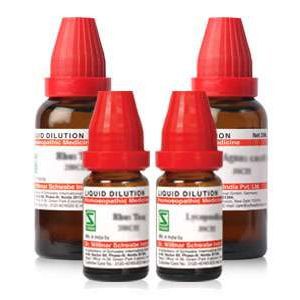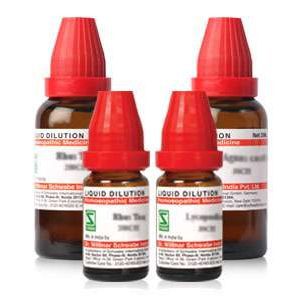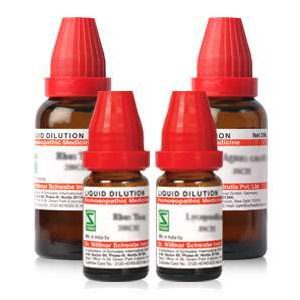Doctors Zone
Journal (JEBH)
Alpha™- Liv Drops
Alpha – Liv Drops Due to high demand from the market, for a formulation in drops for the liver, apart from the syrup already available in the market, Schwabe India developed this product. Introduction The liver plays a key role in metabolism. It has anabolic and catabolic, exocrine and endocrine functions. The liver is a blood reservoir, filter and store of different substances (e.g. glycogen, vitamins). It is the site of serum protein (e.g. albumin, prothrombin, fibrinogen) and enzyme synthesis. Metabolic processes (e.g. bilirubin, hormone, carbohydrate and lipid turnover) and the removal of toxic products are important liver functions. 1 Hepatotoxins (e.g. alcohol, tetracycline, acetaminophen, fungal toxins, and anabolic steroids) can cause specific damage to liver cells. Toxic hepatitis may be clinically silent or severe enough to lead to the rapid development of hepatic failure. Clinical features include hepatomegaly, enzyme abnormalities, fever, abdominal pain, anorexia, nausea, vomiting and weight loss. In patients with underlying cirrhosis, manifestations of portal hypertension may predominate. Aversion to fatty food, abdominal discomfort, nausea and vomiting after meals may be symptoms of 2 cholelithiasis. Jaundice results from accumulation of bilirubin. It has non-hepatic as well as hepatic causes. Hyperbilirubinaemia may be due to abnormalities in the 3 formation, transport, metabolism or excretion of bilirubin. TM Alpha -Liv Drops aids recovery and normalisation of liver functions. Severe liver disease needs specialised treatment. Indications: Slow liver functions, fatty liver, and for supportive treatment of hepatocellular jaundice and toxic liver damage.

Hibiscus abelmoschus or Musk Mallow Useful in Nervous Disorders – Schwabe India
Schwabe News Volume 5 | Issue 3-6 | March – June 2014
Abelmoshus
Hibiscus abelmoschus or Musk mallow is a plant belonging to the Malvaceae family. It is a shrub growing from 1m to 1.25m in height, and is found in Egypt, the East Indies, India and Mexico, where it is known under the name of musk-seed (in Spanish, Abelmosco = musk-grass). The branches are downy with long leaf-stalks, the flowers are yellow and the fruits appear as capsules containing numerous kidney-bean shaped seeds, 3-4mm in length and 2mm wide, with many coffee-coloured striae, which are separated by greyish furrows. They emit a pleasant odour like that of musk, and their taste is aromatic. The seeds contain malvalic acid, sterculic acid and vernolic acid and other constituents.
A homoeopathic medicine is made from the seeds in 65% alcohol. It is cultivated in hotter parts of India and is commonly found in Bengal. It was proved in 1961 by Dr. Luis G. de Legarreta of Mexico.1
In India the seeds are used as stimulant tonic, carminative, diuretic and antispasmodic. As per reports the tincture is useful in nervous debility and other nervous disorders.2
It is an old American Homoeopathic Pharmacopoeia 1890 drug. The revival of interest has taken place at it was learnt that it could be of use in Additions disease lymphangitis of reticulo endothelial system and glucoma.
It has a new area of application. The symptomatology covers sleepiness, dysphagia, oedema of hands and legs; face pale, yellow, itching, fear of animals (insects, flies, spiders, scorpions, and snakes); heavy feeling in the head, as if it were being clamped in a vice (crotalus cascavella); trembling or paralysis of the lips and jaw; rapid beating of the heart with feeling of anguish; dyspnoea, sharp pain in the chest; Scotoma: spots before the eyes, which impede the vision; tearing pain in the eye as if produced by a nail; diminution in hearing, descending stairs; trembling; paresis or even paralysis of limbs, with oedema; feeling of thoracic constriction; Addison’s disease; lymphangitis of the reticulo-endothelial system; migraine, polyneuritis, sialodochitis (presence of a fibrino-purulent lump which can provoke acute ranula), acute glaucoma or chronic glaucoma and detachment of the retina.3 Vithoulkas feels that this is a remedy with a lot of fears that you will tend to confuse with Phosphorus, Crotalus, Cascavella or Calcarea carbonica.4 The prover recommends 15 drops of 3x, which can be made from 1x (Mother Tinctures). Unpublished clinical reports suggest the use of the tincture in drop doses.
References:
- P. N. Varma, Indu Vaid, Encyclopaedia of Homoeopathic Pharmacopoeia, Updated edition 2007, B. Jain Publishers, New Delhi.
- K. M. Nadkarni, Indian Materia Medica, Edited by A. K. Nandkarni, Volume 1, Bombay Popular Prakashan, Mumbai – 34.
- O. A. Julian, Materia Medica of New Homoeopathic Remedies, B. Jain Publishers Pvt. Ltd., New Delhi.
- G. Vithoulkas, Materia Medica Viva, RadarOpus 1.33 (Homoeopathic Software), Archibel S.A. Rue Fontaine St. Pierre 1E, Zoning Industriel de la Fagne, 5330 Assesse, Belgium.
Recent Advancements in Basic Homeopathic Research – A Report on Two Significant Publication
In a study conducted at the Experimental Farm of the State University of Santa Catarina, Brazil, researchers investigated the impact of homeopathic treatments on piglets during the nursery phase. The study aimed to determine whether homeopathic agents could reduce fighting behavior, improve growth performance, and affect hematological, metabolic, and oxidative variables. The study included 108 weaned piglets divided into four groups: a negative control group receiving only the basal diet, and three groups receiving different homeopathic treatments at varying dosages.
Journal of Evidence Based Homeopathy Volume: 1, Issue: 1, January - June 2023
Comprehensive articles

Agrohomeopathy – A Review
Short cases

Unmasking the Intricacies: A Pyogenic Abscess Case Report

Lichen Simplex: A Singular Case Study

Ranula Unveiled: A Case Report and Management Approach

Lichen Simplex: A Singular Case Study

A Puzzling Presentation: A Case Report of Jaundice
Recent provings and updated materia medica

Acidum Formicum

Mygale

Thea Chinensis
Materia medica on phytohomeopathy

Chrysarobinum

Sanguinarinum nitricum

Thiosinaminum
Mother tincture

Asparagus Officinalis

Ginkgo Biloba

Rosmarinus Officinalis
Product watch

Alpha™- Liv Drops

Good Morning™ Constipation Drops

Zauber™ Hair Drops
Research News



























